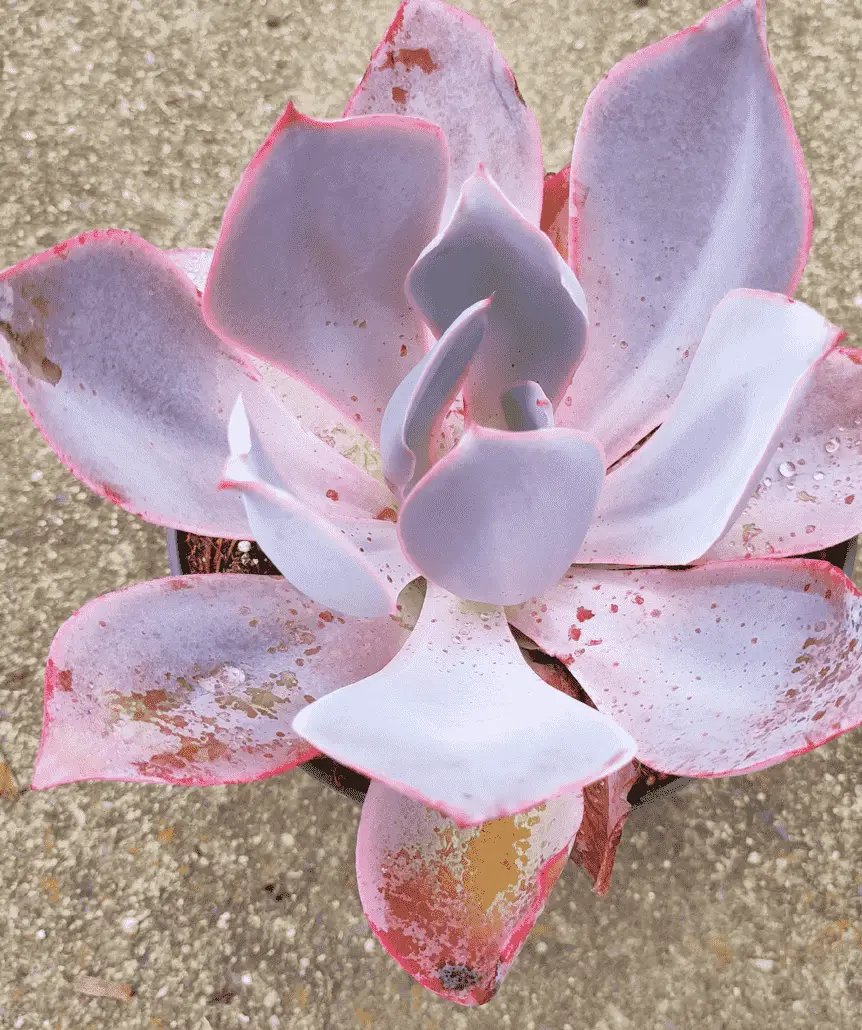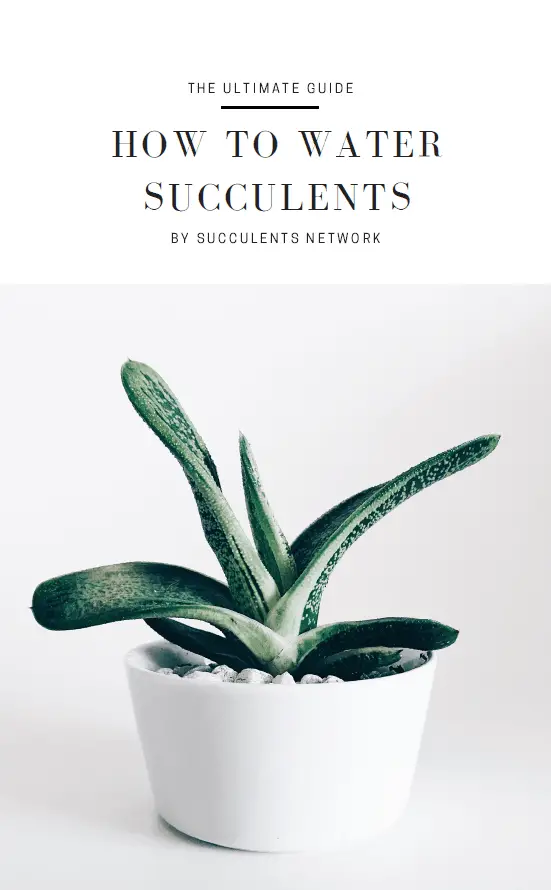
Picture via succulentsdepot
Basic Info
Echeveria is also known as ‘Afterglow’. As the plant matures you can expect it to reach up to around 61 cm (24″) tall and about the same in diameter. The plants main feature are the purple leaves. When the plant finally flowers expect orange flowers. This plant is deer resistant.
Scientific Classification
Family: Crassulaceae
Subfamily: Sedoideae
Tribe: Sedeae
Genus: Sedinae
Care and Propagation Information
Watering
Echeveria ‘Afterglow’ can become something special when well-taken care of. When caring for this succulent type you should water it similarly to other plants (See Watering Guide). The watering method is very important to keep your Afterglow healthy. Your succulent should not sit on the water, and an excess amount of water should be avoided. The best way of watering is soak and dry method on this Echeveria ‘Afterglow’.
General Care for Echeveria ‘Afterglow’
This succulent type is blooms beautifully orange. It is only natural to be excited when growing this plant. It is a great addition to your outside garden!
This page contains affiliate links.
Quick Facts:
- Orange Flowers
- Pink edges on each leave
- Can be grown outdoor
- Grows 61 cm (24″) tall
- Grows up to 61 cm (24″) wide
- Can die easily if overwatered see: How to Water Succulent Plants
- Does not handle cold well
- Plant zone 9a, -6.7°C or 20°F
- Best propagated by offsets, and stem cuttings
- Generally not known to be toxic to humans or animals
- Known to be dormant during winter
Are your succulents dying? Do you need urgent help to keep them alive? Don’t worry! This ebook will solve the problems. I shared all my secrets related to how to water succulents with you.
Where to Plant
Echeveria ‘Afterglow’ succulents need strong light. When planting this Afterglow type in a garden, make sure it gets sunlight. Full to partial sun is the best for its growth. It is better to grow outdoor rather than indoor.
This type of succulent prefers a warm climate. It can survive at zone 9a which is around -6,7°C (or 20°F). If you live in a cold area, it is better to plant Echeveria ‘Afterglow’ in an indoor environment. As long as it gets enough sunlight, the plant will grow happily.
How to Propagate Echeveria ‘Afterglow’
Echeveria ‘Afterglow’ can be propagated by offsets, stem cuttings, or leaves. The first-time repotting is essential when it is bought from the store.
Like all the other succulent types, a well-drained soil mixture is essential. If you want to know about well-drained soil mixtures, check How to Prepare Well-drained Soil for Succulent Plants.
Leaves
When propagating Echeveria ‘Afterglow’ with leaves. (Learn How to Propagate Succulents in detail here.) You should get a leave carefully from the mother plant. It should be a healthy leave that has no part left on the stem. In this way, the propagation will work. Before replanting, wait for a few days to allow it to callous. Use well-draining soil for your new succulent plant. Don’t forget to water when the soil dries out.
Cuttings
When propagating Echeveria ‘Afterglow’ from cuttings, cut a leaf from the mother plant carefully with a clean knife or scissors. Before replanting, wait for a few days to allow it to callous. Use well-draining soil for your new succulent plant. Don’t forget to water when the soil dries out.
Offsets
Echeveria ‘Afterglow’ propagates from offsets. To be able to propagate from the mother plant, you might wait several years for the main plant to produce an offset. To start this process, use a sharp knife and remove an offset from the main plant. When you remove the offset, clean the extra soil from it. Before replanting, wait for a few days to allow it to callous. Use well-draining soil for your new succulent plant. Don’t forget to water when the soil dries out.
Origin and Habitat
Echeveria ‘Afterglow’ is known to be a hybrid between Echeveria cante, and Echeveria shaviana.



